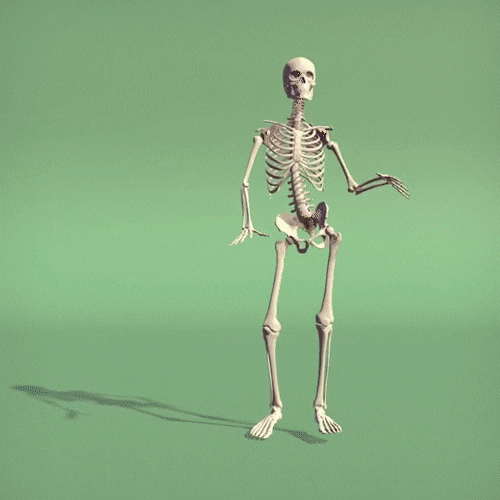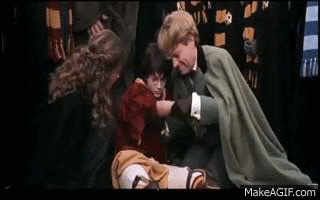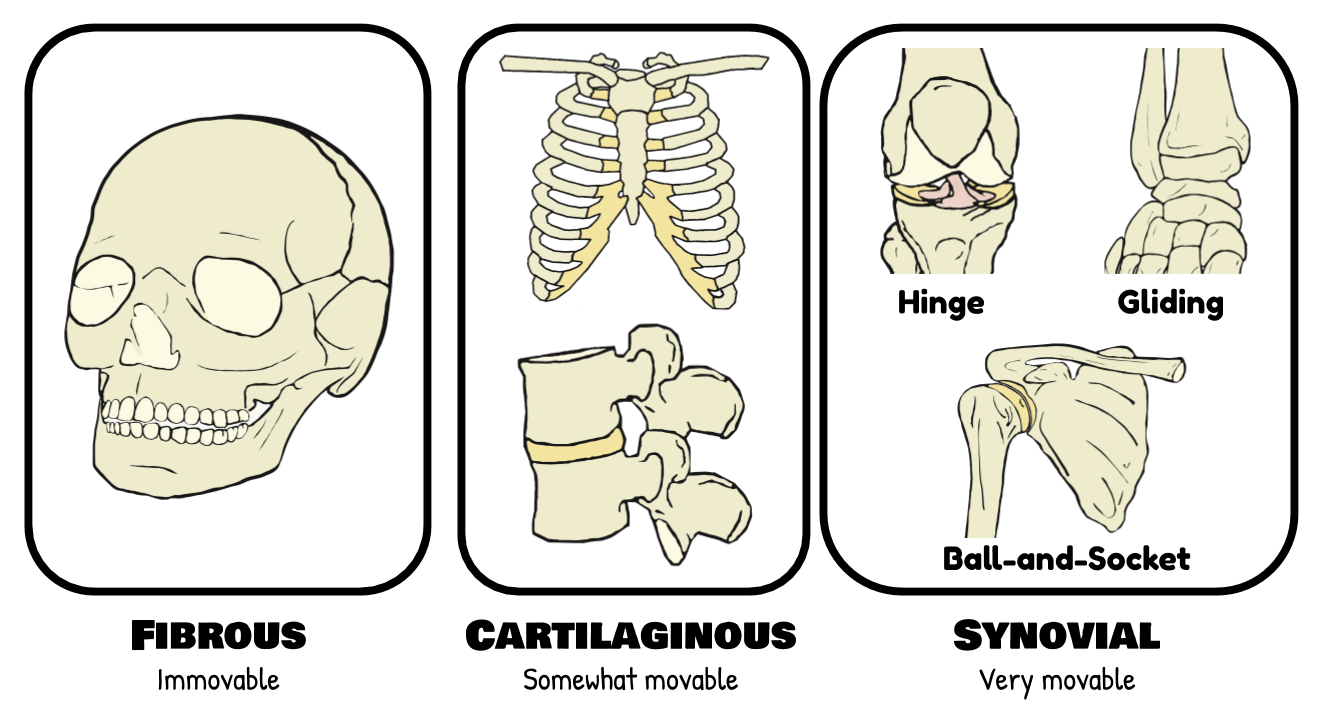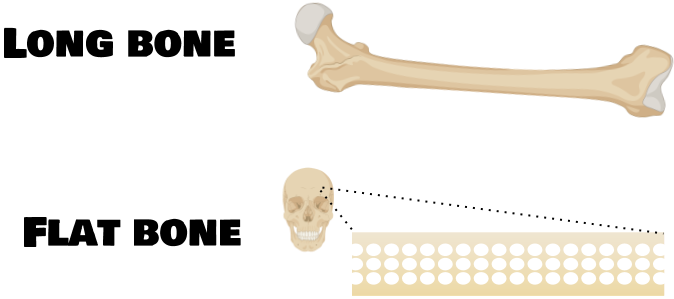the skeletal system
the role of the musculoskeletal system
Have you ever broken a bone or pulled a muscle? Having your leg in a cast or an ice pack on your arm can really limit how you move around. Our musculoskeletal system is amazing because it supports your entire body, protects important organs like your heart and stomach, and acts as the main storage system for minerals. That’s why, when you break or hurt a part of it, it can seriously change the way you live, even in the short-term.
In this part of the lesson, we’ll talk about the role of the skeletal system in providing leverage to your muscles and protection to the organs underneath. In the next part of this lesson, we’ll talk a bit about how your muscular system allows you to move. Finally, I’ll introduce the names of some important bones and muscles that are good to know the names of. First off, bones.
In this part of the lesson, we’ll talk about the role of the skeletal system in providing leverage to your muscles and protection to the organs underneath. In the next part of this lesson, we’ll talk a bit about how your muscular system allows you to move. Finally, I’ll introduce the names of some important bones and muscles that are good to know the names of. First off, bones.
Providing leverage for movement
Have you ever tried to pull something toward you or push something away from you with something floppy: for example, a pool noodle? What about writing with one of those bendy pencils? How did that go for you? My guess is not well. The reason for this is that you need leverage—something firm to push off against—in order to produce any useful force.
Don’t believe me? Try for yourself! A great way to demonstrate the need for leverage is to grab a pool noodle (one of those floppy foam things that you use to float around—or whack your siblings upside the head with—in the pool). Now try pushing open a door (or pulling it shut, or lifting up a small chair, or picking up something with one end of it—anything that requires some force). Did it work? Again, my guess is no.
Now try sticking a broom handle through that pool noodle. My guess is it’s a lot easier to move stuff around with it. You could use it as a crutch, you could push open a door with it (might still be a bit tricky to maneuver a door handle), you could even make a Quidditch broom with it—the point is, the leverage that the broom handle gave you turned your useless pool noodle into an actual, useful tool/toy.
Don’t believe me? Try for yourself! A great way to demonstrate the need for leverage is to grab a pool noodle (one of those floppy foam things that you use to float around—or whack your siblings upside the head with—in the pool). Now try pushing open a door (or pulling it shut, or lifting up a small chair, or picking up something with one end of it—anything that requires some force). Did it work? Again, my guess is no.
Now try sticking a broom handle through that pool noodle. My guess is it’s a lot easier to move stuff around with it. You could use it as a crutch, you could push open a door with it (might still be a bit tricky to maneuver a door handle), you could even make a Quidditch broom with it—the point is, the leverage that the broom handle gave you turned your useless pool noodle into an actual, useful tool/toy.
So it is with the human body. Imagine you suddenly lost all the bones in your arm. Or, on the topic of Quidditch, if you’re Harry Potter, just remember that time that the combined “helpfulness” of Dobby the House Elf (bless) and The! Gilderoy Lockhart actually made you lose all of the bones in your arm:
What a useless sack of skin and muscle. Also, the arm.
joints
Moveable joints are really important. Think back to when you were trying to turn a door handle with a broom handle. You weren’t able to do much without actual hands, were you? Probably not. So, it’s important that we have bones, because they provide leverage for movement, but it’s also really important that these bones have joints, otherwise the types of movement you could do would be very limited. Like a robot. Except that even robots have some joints. The importance of joints is beautifully summarized here:
Thanks, non-proprietary Elsa and Anna.
Joints are anywhere two bones meet. Because there are lots of ways that bones can meet, there are a few different types of joints. Actually, not all of them are movable. For example, the joints where your skull bones meet don’t move at all. They’re called fibrous joints. The joints where your ribs meet your sternum (breastbone) only provide a little bit of stretch, so that you can breathe in and breathe out without your ribs restricting your movement. These are called cartilaginous joints. All of the joints that you think of as “hinges”—your movable joints—are called synovial joints. There are a few different types of synovial joints depending on how they move. For example, ball-and-socket joints—like in your shoulder and hip—move all around in circles, while hinge joints—like your elbow and knee—move back and forth.
Joints are anywhere two bones meet. Because there are lots of ways that bones can meet, there are a few different types of joints. Actually, not all of them are movable. For example, the joints where your skull bones meet don’t move at all. They’re called fibrous joints. The joints where your ribs meet your sternum (breastbone) only provide a little bit of stretch, so that you can breathe in and breathe out without your ribs restricting your movement. These are called cartilaginous joints. All of the joints that you think of as “hinges”—your movable joints—are called synovial joints. There are a few different types of synovial joints depending on how they move. For example, ball-and-socket joints—like in your shoulder and hip—move all around in circles, while hinge joints—like your elbow and knee—move back and forth.
providing protection
Long bones like the ones in your arms and legs are awesome levers for movement, but that’s not the only function of the skeletal system! We also have flat bones which provide protection.
Flat bones include the ribs and the bones of the skull. Think about what these bones do. Sure, the bones of the face provide some leverage for your facial muscles so you can make facial expressions, and your jaws and teeth are important for chewing and grinding your food. The ribs also have some function in acting as an anchoring point for the muscles of your chest, back, and shoulders, including the ones that help you breathe. But, arguably their most important function lies in protecting what’s underneath: Some of your most important organs. The skull protects your delicate and precious brain, while your ribs protect your heart and lungs. They are able to do this by striking the perfect balance of rigidity and springiness.
storing calcium and phosphorous
You’ve probably heard that you need a lot of calcium to make your bones strong. Calcium is also important for a lot of other processes in your body, like muscle contraction (including heart muscle contraction!), release of neurotransmitters from nerves, and clotting blood. It’s important that your body keep extra of this important ion on hand just in case you ever start running low. Since many of the compounds made from calcium are rigid solids, the best place to store it is in the bones.
Calcium storage is closely regulated by hormones in the body. Parathyroid hormone released by the parathyroid gland (these are small nodules on the thyroid gland) raises blood calcium by causing bones to release it. Calcitonin released by the thyroid gland lowers blood calcium by storing more in bones. You don’t really need to know these details for this class, but it’s another good example of how endocrine signalling helps to maintain homeostasis.
Calcium storage is closely regulated by hormones in the body. Parathyroid hormone released by the parathyroid gland (these are small nodules on the thyroid gland) raises blood calcium by causing bones to release it. Calcitonin released by the thyroid gland lowers blood calcium by storing more in bones. You don’t really need to know these details for this class, but it’s another good example of how endocrine signalling helps to maintain homeostasis.
In addition to calcium, bones also store phosphorus. Phosphorus is needed for ATP production, among other roles in the body.
blood cell production
Bone isn’t just a structurally important calcium storage tank, though, as important as these functions are. It houses bone marrow, which produces both red blood cells, which carry oxygen, and white blood cells, which are part of the immune system. Bone marrow is found at the center part of long bones.
If you’d like to learn more about the importance of bone marrow, this video gives a good overview:
Summary
This video gives a good overview of some of the most important topics we discussed, plus a bit of a deeper dive into the skeletal system:
You should understand:
- That bones provide leverage for muscles to move.
- That joints are anywhere two bones meet. Moveable (synovial) joints allow for muscle movement/bending.
- That flat bones, such as the ribs and skull, protect structures underneath.
- That bones store calcium and phosphorus, which is regulated by hormones.
- That bone marrow found inside of long bones are responsible for producing all of your blood cells.
Learning Activity
Contributors: Megha Kori, Emma Moulton
Some images made using biorender.com
Some images made using biorender.com







